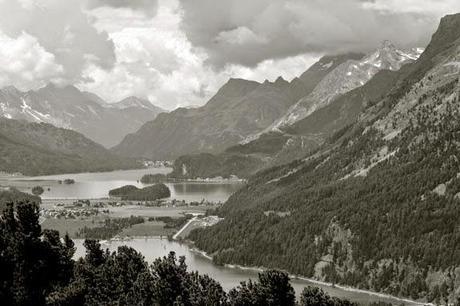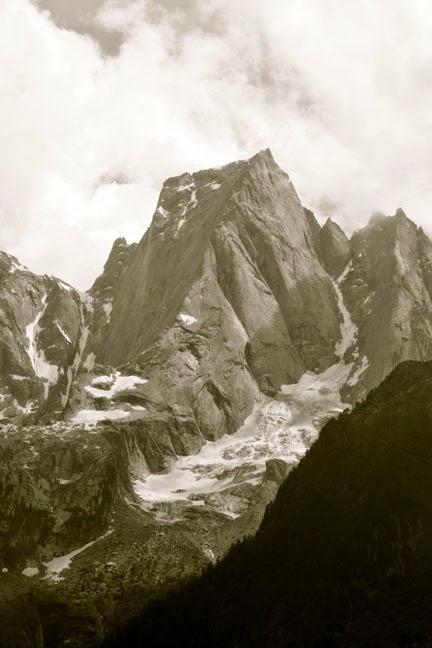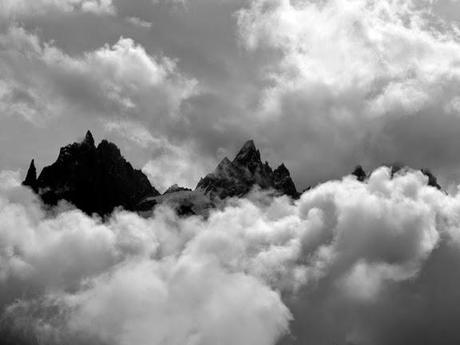
Or at least it can be, as demonstrated by these photos taken by Ryder-Walker guides Dave Gruss and Willi Glanznig. Dave shot the above photo this past summer while hiking with guests in the Engadine region of eastern Switzerland.
Veteran Engadine travelers should have no trouble recognizing this shot. It’s a view of the village of Sils Maria (center of the photo). The lake in the foreground is called the Silvaplanersee (Lej da Silvaplauna in Romansh) and the lake in the background is called the Silsersee (Lej da Segl). What is Romansh? It’s a Latin dialect left over from the original Roman settlements known collectively as Rhaetia Prima. It’s also one of the four official languages of Switzerland, though only about 0.5% of the population speak it today.
Continuing with the photo, the village at the far end of the photograph is called Maloja. From there, a two-lane road carries travelers over the Maloja pass (1,815 meters), and down a spaghetti-like series of switchbacks into the wild and remote Val Bregalia. One of our favorite mountains in the Val Bregalia is the Piz Badile (3,305 meters)—the next photo:

Just imagine yourself sitting on a patio, in the perfectly preserved 1,000 year-old village of Soglio, gazing up at this peak. We do it every summer on our Engadine Trek and Engadine Summit Series hikes. It’s the kind of thing that makes you glad to be alive.
Speaking of patios, we offer you this photo:

These are the famous Aiguilles (needles) of Chamonix. Willi shot this photo while hiking our Tour du Mont Blanc.
It is a very special experience to relax at a street side café in Chamonix and send your eyes upward, across 12,000 feet, to the summit of Mont Blanc. The sheer number of mountain peaks surrounding Mont Blanc, the magnitude of the scenery, the jaggedness and myriad serrations of the rock; it’s almost more than a person can stand. Which leads to this:
I love looking at these photos in black and white. Some could argue that the emotions I feel are just nostalgia for a bygone era, a time when the spark of nascent alpinism ignited a world of discovery and geographical firsts. Others might say that I viewed too many black and white photos when I was child. My father was an antique dealer after all!
All of this is true, but there’s something else at work here.
Why do we continue to shoot black and white photos (a clearly outdated technology) when high definition cameras allow us to capture color better than ever before? Why do we throw Instagram filters on golden sunsets when the rods and cones in our eyes give us an all-access pass to ROYGBIV?
It’s because black and white photography is proof positive that after you strip way the color, when you delete the pixels and trash the hexadecimal codes, the beauty of the world remains. Life is beautiful, and nature is worth remembering, no matter how we choose to represent it. The first Impressionists knew this. They shocked the world by demonstrating that when we think we've erased the details—when we distill our lives into a collection of tiny dots and strokes—we just need to step back to see that the beauty of the world is still there.
Digital photographs are modern impressionist works. They are millions of tiny dots, each one representing a point of light that bounced off some object and found its way into a camera lens and onto our screens. What we choose to do with those dots is up to us, but one fact remains. Nature will always inspire us, even when we view those dots in black and white.

